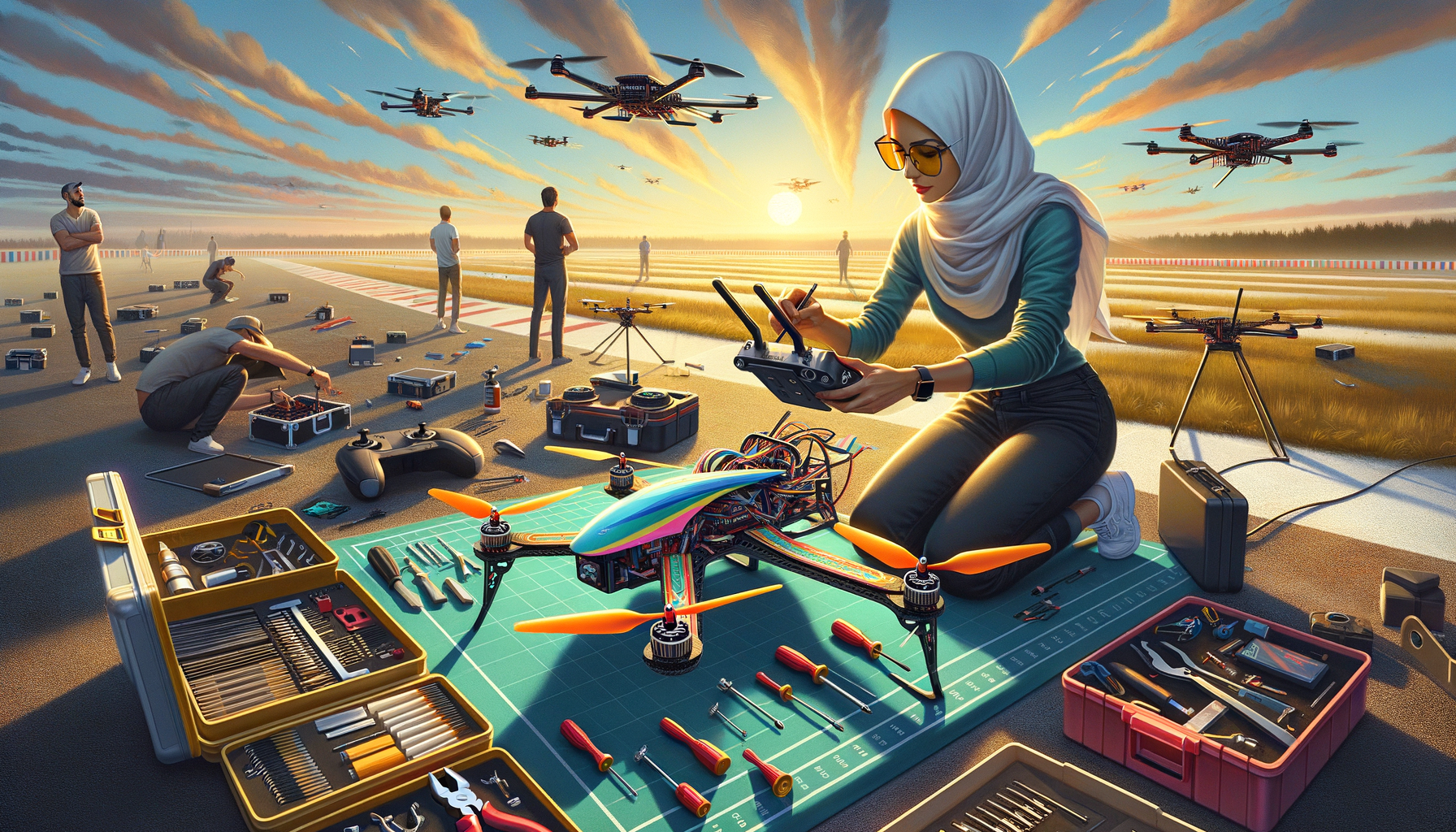Buckle up, drone enthusiasts! You’re about to embark on an exhilarating journey into the world of racing drones. Did you know that the drone racing market is expected to reach $2.1 billion by 2026? That’s right – this high-octane hobby is taking off faster than a quadcopter on race day! Whether you’re a tech whiz or a complete newbie, our visual guide will walk you through setting up your first racing drone. Let’s get ready to soar!
Understanding Racing Drone Basics
Let’s dive into the exciting world of racing drones! You might be wondering, “What makes these little flying machines so special?” Well, racing drones are a breed apart from your typical camera drones or toy quadcopters. They’re built for speed, agility, and pure adrenaline-pumping action.
The key components of a racing drone are carefully selected to maximize performance. We’re talking about high-powered motors, lightweight frames, and specialized flight controllers. But here’s the kicker: weight and aerodynamics play a crucial role. Every gram counts when you’re trying to shave milliseconds off your lap time!
Choosing the Right Components
Now, let’s get into the nitty-gritty of picking the perfect parts for your racing drone. First up is the frame. You want something sturdy yet lightweight – carbon fiber is a popular choice among racers.
Next, we’ve got motors and propellers. These are the heart and soul of your drone’s performance. Look for motors with high KV ratings and pair them with propellers that complement their power output.
The flight controller is like the brain of your drone. It processes all the inputs and keeps your quad stable in the air. Choose one that’s specifically designed for racing, with features like fast looptime and advanced filtering.
Don’t forget about the ESCs (Electronic Speed Controllers). These little gadgets control your motors’ speed. Opt for ones that can handle the current draw of your motors and offer smooth throttle response.
Lastly, let’s talk about the FPV (First Person View) system. A low-latency camera and powerful video transmitter are essential for racing. After all, you need to see where you’re going when you’re zipping through those tight turns!
Assembling Your Racing Drone
Alright, it’s time to roll up your sleeves and start building! We’ll begin by putting the frame together. This usually involves attaching the arms to the central plate and securing everything with screws.
Next, we’ll mount the motors to the arms and solder the ESCs to the motors. Be sure to double-check your wire connections – a loose solder joint could spell disaster mid-flight!
Installing the flight controller and power distribution board is next on our list. Pay close attention to the orientation of your flight controller – it needs to be aligned correctly for your drone to fly properly.
Finally, we’ll set up the FPV system. Mount your camera at the front of the frame and install the video transmitter in a spot where it won’t interfere with other components.
Configuring Your Drone’s Software
With the hardware sorted, it’s time to dive into the software side of things. Start by installing and updating the firmware on your flight controller. This ensures you have the latest features and bug fixes.
Next up is calibrating your sensors and controls. This step is crucial for ensuring your drone flies straight and true.
You’ll also want to set up different flight modes. Most racers use a combination of angle mode for learning and acro mode for racing.
Don’t forget to configure your failsafe options. These are safety features that tell your drone what to do if it loses connection with your controller.
Fine-tuning Your Racing Drone
Now comes the fun part – tweaking your drone for optimal performance! Adjusting PID (Proportional, Integral, Derivative) settings can dramatically improve how your drone handles. It’s a bit of an art form, so don’t be afraid to experiment.
Customizing rates and expo settings will affect how your drone responds to stick inputs. Higher rates mean more agility, but also require more precise control.
Remember, testing and tweaking is an ongoing process. The more you fly, the more you’ll understand how different settings affect your drone’s performance.
Safety Considerations and Pre-flight Checks
Before you take to the skies, let’s talk safety. Always wear protective gear when flying, including goggles to protect your eyes from potential prop strikes.
Develop a pre-flight checklist and stick to it. This should include checking propellers for damage, ensuring all connections are secure, and verifying that your batteries are properly charged.
It’s also crucial to understand local regulations and flying etiquette. Know where you’re allowed to fly and always be respectful of others in the area.
Taking Your First Flight
Ready for liftoff? Choose a suitable practice area for your first flights. An open field away from people and obstacles is ideal.
Start by mastering basic flight maneuvers. Learn to hover, perform simple turns, and fly in a straight line before attempting any fancy tricks.
As you progress, focus on smooth, controlled movements. Remember, smooth is fast in the world of drone racing. With practice, you’ll be carving through the air like a pro in no time!
Conclusion
Congratulations! You’re now equipped with the knowledge to set up your very own racing drone. Remember, practice makes perfect, so don’t be discouraged if your first flights aren’t record-breaking. The thrill of racing through the air at breakneck speeds is just around the corner. So, what are you waiting for? Grab your gear, head to the field, and let’s see what you can do! Who knows? You might just be the next drone racing champion in the making. Happy flying!







